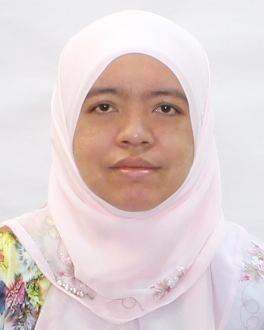On the 28th of May, the government decided for all states to undergo another total lockdown or the Movement Control Order 3.0 (MCO 3.0) effective from 1 to 14 June. The MCO 3.0 was further extended until the 28th of June. On the 29th of June, the MCO 3.0 was then replaced with the National Recovery Plan (Pelan Pemulihan Negara - PPN) Phase One.
The first phase of PPN will remain effective until the three key threshold value indicators are achieved, namely when (1) the number of daily Covid-19 cases drop to below 4,000; (2) the rate of bed usage in intensive care units (ICU) is at a moderate level and; (3) 10% of the population has received two doses of the vaccine jabs.
The prolonged restriction of movements and other social and economic activities during the Covid-19 pandemic affects different people in different ways. All of us must practice a new normal which, after almost two years, has turned into normality of our lives. From children to adults to senior citizens, women or men, working or unemployed, all of us have been affected and these effects have changed our lives in one way or another.
One of the significant changes is the way teaching and learning is conducted. Since the closing of schools due to the pandemic, the implementation of home-based teaching and learning (PdPR) has affected not only the students but also teachers and parents. The PdPR 2.0 that started on the 17th of May until 28th May has also been extended until 17th July. Although the PdPR 2.0 have seen decent improvement after considering feedbacks from people involved, it still, however, causes nightmare to some people.
Teachers and students are given the option of conducting teaching and learning (PdP) either online, offline, or via the ministry’s Digital Educational Learning Initiative Malaysia (DELIMa) platform. Each school will create their own timetables that cater to their students who have different backgrounds and needs. However, there are still issues like the long teaching hours, too much homework, and internet access. Not all students have access to digital devices; some have devices and internet access; some only have devices without internet access; while others have devices and internet access but have to take turns with other siblings or waiting for the parents to return from work because they need to borrow the phone. The unfortunate ones do not have all these.
As for teachers, although they already have the experience doing PdPR before and are more capable this time, but there are still many obstacles they must face. Some of them include the problem of internet coverage which has yet to be comprehensive especially in rural areas; the availability of adequate devices and other equipment including for large families; systematic e-textbook materials; local technical assistance; as well as monitoring and evaluating each level of effective PdPR.
Besides being a teacher, some are also mothers who need to juggle between the heavy burdens of educating students during this pandemic while stewarding their family through the crisis. They experience that dynamic two times over – instructing their students virtually while also working as the primary parent to ensure that their children don’t fall behind in their own distance learning.
Teaching from home is also a fundamentally different exercise, one that is simultaneously more invasive but also lonelier. Students on Google Meet lessons often have their cameras off and microphones muted, making it harder to engage or connect with them. Normally, teachers can rely on their colleagues for consistent emotional support in quick lunchroom chats. That sort of spontaneous support is not an option right now.
The challenges and effects are greater for mothers during stay-at-home orders. Many women feel pressured to keep up with their work, housework, and attend to their children. Research shows that in many families, mothers are more often the ones supervising a child’s virtual education. Mothers are often stuck juggling between children and work at the same time. Additionally, mothers take more minutes of housework while working from home.
Research also shows that mothers who are telecommuting during the Covid-19 pandemic reportedly suffer from higher level of anxiety, loneliness, and depression than telecommuting fathers. Nevertheless, a survey also finds that stay-at-home orders had lessened some of the domestic load by eliminating tasks like hauling children to extracurricular activities or planning their daily schedules.
The closure of schools and many childcare centers as well as the new work-from-home arrangements have put working parents in a bind. Although some fathers may take on more childcare than usual while working at home, some fathers are living separately from their families as they must work in different states. During this time, they were not allowed to cross the states by the government, and some were not allowed to be away from their workstation by their management. These measures have an impact on their stress level as they were not allowed to be with their families.
Research finds that the COVID-19 lockdown measures has increased the level of parental burnout among parents. In this regard, co-parenting can play a crucial role in mitigating this effect. Notably, the data from the research shows that the worst position to be in is to be unemployed. Unemployed mothers and fathers were consistently more anxious, depressed, lonely, and hopeless than parents who still have jobs.
Efforts to combat the COVID-19 crisis brought mountains of legislations and guidelines to coerce or encourage people to stay at home and reduce the spread of the virus. One of them is the travelling restriction where people are banned from travelling except for emergencies and special issues. For some people who usually travel to visit their parents, family members and friends, this measure has restricted their movement and opportunity to meet up. Many grandparents found themselves separated from family members, including grandchildren, due to social distancing or cautionary measures to prevent their possible exposure to the virus. This had stopped all visits from people who might support them and the lack of in-person contact for remote grandparents has been exceptionally difficult.
It is expected that isolation and physical (social) distancing due to the Covid-19 pandemic will lead to similar consequences as confined people are detached from their loved ones, deprived of personal liberties, and devoid of purpose owing to altered routine and livelihood. In our current crisis with the coronavirus, we are struggling to understand not only how we can support the people around us and the people we love, but we are also struggling to understand how to get the support we need to stay strong and overcome the fear and anxiety we feel.
Fear and anxiety during a disease outbreak can be overwhelming and cause strong emotions. According to the Health director-general, certain individuals have a higher risk of experiencing mental health problems including depression, when faced with overwhelming stress and isolation from their family and friends’ support network. He added that on average, almost four suicide cases were reported to police every day in the first quarter of 2021.
Thus, aware of the fact that people need support and space to express their feelings, KANITA has initiated the Virtual Peer Support Group as a space on campus for staff and students to speak with a group of peers about a challenge, struggle, concern, worries, and/or personal hardship they may be facing during the lockdown and Covid-19 pandemic. In these difficult times, we all need empathy, love, and understanding.
Thus, this group is offering consistent emotional support and understanding, and empathetic peer-based support using active listening and advice. It is hoped that the Covid-19 pandemic will end soon so that we can get back to our normal life before all this started.
















